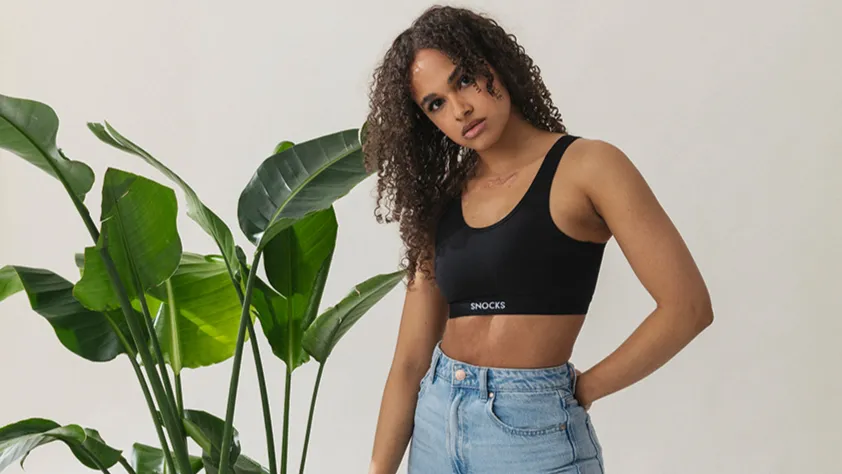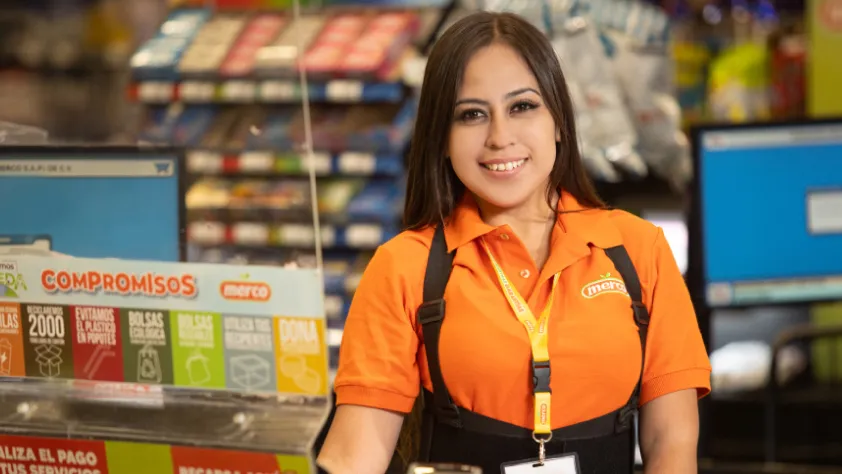
Customers
5 ways to direct leads and customers to business messaging conversations
June 9, 2023
Think of the last time you had a horrible customer service experience. Were you shouting “agent” into the phone and constantly emailing the brand — only to find that the business’ staff is impossible to reach?
No one wants to be the company with zero 1:1 communication. With that said, it’s hard to respond to every customer.
Business messaging solutions give you the best of both worlds — your brand can have direct and valuable conversations with customers with minimal effort. Marketers reported how messaging platforms are easy to use in our internal research.1 Their top reasons for using business messaging were fast response times, convenience, and simplicity.
To make the most of business messaging, give your leads and customers plenty of options to use this communication channel. Luckily, there are many available messaging entry points that you and your marketing team can set up in little to no time.

Social media links and posts
Chances are, you’re already finding potential customers on social media. Social media increases leads by 72% on average, according to our internal research.2
Once you connect with shoppers on social media, keep building the relationship by leading them to a messaging app. Include your brand’s messaging app number or link in your social media profile bios and post captions. From these entry points, leads can ask your brand product questions and receive recommendations through your messaging app.
An Indonesian cosmetic company created social media posts with captions that linked to the brand’s Whatsapp messaging account and images showing their messaging phone number. These posts encouraged consumers to ask beauty questions and get product recommendations from the company’s team. By promoting messaging on social media, the cosmetic brand increased customer interactions in one year by 600% and received 10 times more conversations through the messaging platform.3
While customers can send direct messages to brands on social media platforms, encourage them to reach out over your preferred messaging app. You’ll have one less support channel to manage without the privacy concerns that come with social media. 67% of marketers in our internal research reported that they found business messaging solutions trustworthy, but only 45% said the same for social media.4
Tip: Share messaging app links with context
If you include a messaging app link in your Instagram bio, it will appear as a URL. Make sure your leads and customers know what the link is going to by introducing it with text. Consider including the text, “Our team is available 24/7 to answer your questions!” before the messaging link.

Click-to-message ads
Imagine a typical display ad. A consumer sees a picture of a washing machine they were browsing last week on the sidebar of their favorite news website. They click on it, which takes them to the washing machine’s product page.
This ad works well if the shopper is nearly ready to buy the appliance. But what if they have questions about the machine? They may need more than a product page to convince them to make such a large purchase.
Click-to-message ads give your brand a chance to nurture the lead with a conversation. Instead of taking leads and customers to a static page — where they may lose interest — these Facebook and Instagram ads direct shoppers to your messaging app. From there, they can ask questions and potentially even purchase from the app.
Want to learn more about click-to-message ads? Check out this post.
A Turkish online fashion brand uses Facebook click-to-message ads to promote its clothing. When a new shopper clicks on these promotions, the brand’s chatbot can help them set up a customer profile from the messaging app. If the shopper is already a customer, the bot can quickly pull up their profile so they can buy products right from the messaging app.
These messaging flows have been a success for the brand. Within two years of launching the chatbots, 55% of shoppers who interacted with them placed their first order in the messaging app.5
Tip: Pair click-to-message ads with retargeting
Click-to-message ads aren’t just useful at the beginning of the customer journey. Use Facebook’s retargeting to show these promotions to prospects and existing customers. Chances are, they have questions about your products that may lead to a purchase. In a Kantar study,6 66% of online adults reported that they would be more likely to buy a product from a business they can reach via messaging.

Website widget and contact pages
When consumers visit a brand’s website with a question or a problem, they often expect help right away. 72% of consumers reported to Zendesk that they want immediate support from brands.7
Give your website visitors the rapid service they want by directing them to your preferred messaging app. Set up chat widgets in the bottom corner of your website that send visitors to your messaging app after they enter a response. You can also create a Contact Us web page that includes your brand’s messaging app phone number and a link or QR code to the messaging app.
An Indonesian online grocery retailer features a QR code and link to their messaging app on their Contact Us web page. In messaging chats, customers can share concerns and find resolutions with the retailer right from the app. For example, they can send pictures of damaged grocery items, so the retailer’s agents can immediately process a refund.
The brand is able to offer rapid, high-quality support through messaging. Within one year, the company lowered its average messaging app response time to 1 minute, and 99.95% of support messages get a response within 5 minutes.8
Consider using this messaging entry point on your brand’s app, too, if you have one. You might set up a Contact Us form on your app that lets users send a comment via your messaging app. If your app doesn’t have a form, consider including a messaging icon and phone number on your Contact Us app page.
Tip: Use QR codes, not just phone numbers and links
Often messaging apps are only set up on mobile devices, so URL links and phone numbers won’t work for desktop users — forcing them to reopen your website on their phone to find the link or type in your brand’s number manually.
Accommodate these users by including QR codes on your Contact Us pages. If consumers are on a desktop, they can grab their phone and scan the code in seconds.

Exit intent pop-ups
This tactic is a popular way for brands to win back people about to leave their website. Just as the shopper’s mouse hovers over the “X” button, a pop-up appears with a special offer.
Consider strengthening these pop-ups by making them lead to your messaging apps. Shoppers can redeem the pop-up incentive once they open a chat with your brand.
Use that messaging conversation to show bored shoppers that your brand cares about them. Once your rep sends a special offer over messaging, they can ask the site visitor if there’s any other way they can help.
A German clothing retailer set up messaging exit intent pop-ups that offered discounts to site visitors who opted in to their marketing. If their site visitors clicked on the pop-up, they were directed to a messaging app chat where a bot asked them to sign up for the brand’s email newsletter. Once the shopper submitted their email address, the bot sent them the discount code.
In less than a year, the retailer grew their messaging audience to over 100,000 people and increased revenue by 5% through their business messaging platform.9
Tip: Offer site visitors their reward soon after they click the pop-up
It’s tempting to ask people for a ton of information once they click the pop-up and start messaging your brand. But remember, these shoppers were about to leave your site. You don’t want to risk frustrating them by delaying the offer the pop-up promised.
Keep customers happy by delivering the reward right when they open the messaging chat or soon after. If you want to ask for a piece of information—like an email address—make that request clear in the pop-up and stick to just one question. You might also test pop-ups that lead to chats with requests versus those that deliver offers immediately to see which ones lead to more engagement.

Product packaging and physical promotional material
Like digital consumers, in-store shoppers want customer support to be convenient. Make it easy for these buyers to find the help they need by creating physical messaging entry points.
Place QR codes that lead to your messaging app on any physical space customers interact with — like product packaging, store signage, and receipts. With these physical messaging entry points, your customers won’t have to wait to find a store clerk to ask a question or report a receipt issue. They can address their issues via chat right away.
Consider how a Mexican supermarket franchise found success with business messaging. The company placed a messaging app QR code on its receipts, store signage, flyers, and product packaging. Shoppers who scanned the code could immediately chat with a bot. They might ask questions about product availability and prices or report issues, like a discount not appearing on their receipt. If needed, the bot could escalate problems to human agents.
The franchise now handles 67% of customer support requests through its messaging app, thanks in part to these physical entry points.10
Tip: Use messaging apps to empower your in-store employees, not replace them
Because chatbots can handle a decent number of customer inquiries, it’s tempting to only rely on them to solve problems. But make no mistake — customers do still want help from people. When a shopper has a serious issue, there’s nothing more frustrating than a brand that forces them to talk to a bot.
Strike the right balance by treating messaging apps as a supplement to your in-person support. Set up messaging entry points so customers can handle simple requests with the chatbot while still having agents and in-store employees on-hand to solve problems — especially complex ones that go beyond a bot’s abilities.

Integrate messaging across the customer journey with ads
All of these entry points can help leads and customers connect with your brand over messaging. But keep in mind, most are organic entry points. If you want to boost the reach of your messaging channel, consider using click-to-message ads.
Businesses across industries — from banking to cars — are using click-to-message ads to engage and nurture leads and customers throughout the marketing funnel. Build your brand’s messaging audience by learning more about these ads in this blog post.